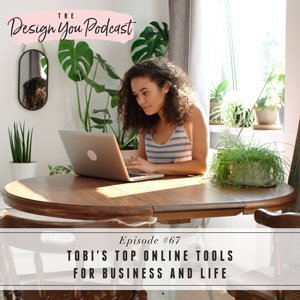
Firstly, Happy 4th of July to all my friends living in the United States! As a little gift today, I thought I’d share some of my top online tools that I use in my business and life that have truly helped me transform the way I do things and be so much more productive and efficient than I ever could have imagined.
I live in such a digital world with tons of cool online services and apps that help me and my team get so much done in my business. I couldn’t ever imagine going back to not having them in my toolbox, and today I’m giving you a big old list of absolutely everything that I use. From tools in my interior design business, my podcast, webinars, social media, to online courses, and even just personal apps I use to make my busy schedule more manageable, it’s all here today.
Join me this week if you need help with time management, organization, or even just outsourcing certain jobs within your business! It can be really tricky juggling all the balls and these tools I’m sharing with you today are definitely going to take the load off.
If you loved this concept and want to keep this conversation going, make sure to join us in our free Design You Podcast community on Facebook! I’m in there with guests of the show and we answer questions you might have and all sorts of other fun things. See you there!





